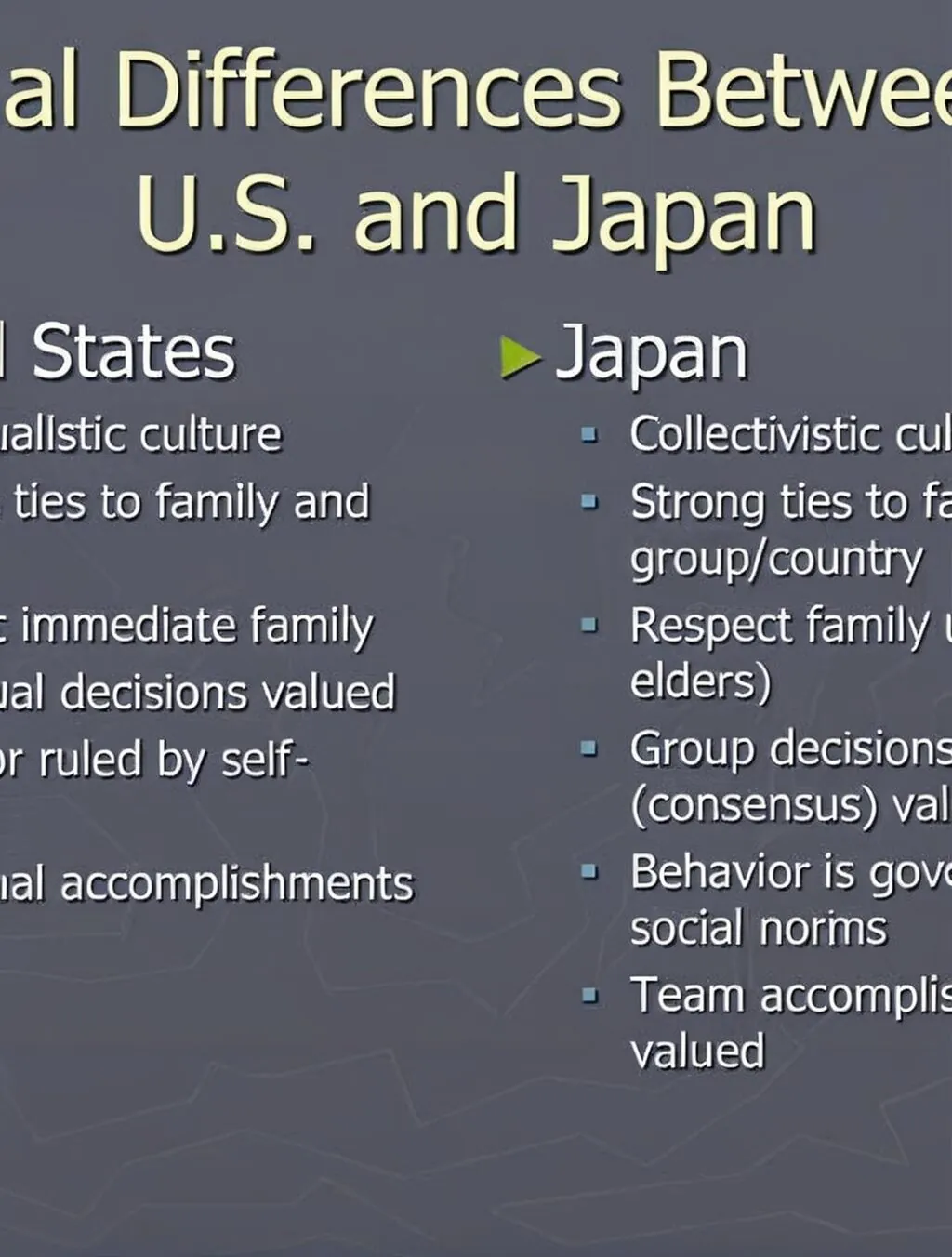Cultural Differences Between Japan and the US
Differences in Etiquette and Social Norms
- Greetings: In Japan, bowing is customary, while in the US, handshakes are common.
- Dining Etiquette: In Japan, slurping noodles is acceptable, but not in the US.
- Personal Space: Japanese culture values personal space, while Americans tend to be more touchy-feely.
Differences in Communication Styles
- Indirect vs. Direct Communication: Japanese often speak indirectly, while Americans are more direct.
- Nonverbal Cues: Japanese rely heavily on nonverbal cues, such as eye contact and body language, while Americans may be more verbal.
Differences in Work Culture
- Group Orientation vs. Individualism: Japanese workplaces emphasize group collaboration, while American workplaces tend to value individual achievement.
- Work-Life Balance: Japanese workers often work long hours, while Americans may prioritize a better work-life balance.
FAQs
- Q: What is the biggest cultural difference between Japan and the US?
A: The emphasis on group orientation in Japanese culture and individualism in American culture. -
Q: How can foreigners adapt to cultural differences in Japan?
A: By learning about customs, respecting local etiquette, and being open to new experiences.
Conclusion
Win a Free Trip to Japan!
Experience cherry blossoms and ancient temples
Understanding the cultural differences between Japan and the US can help us navigate cross-cultural interactions more effectively. By respecting cultural norms and adapting our communication and behaviors, we can bridge the gap between these two distinct societies.
